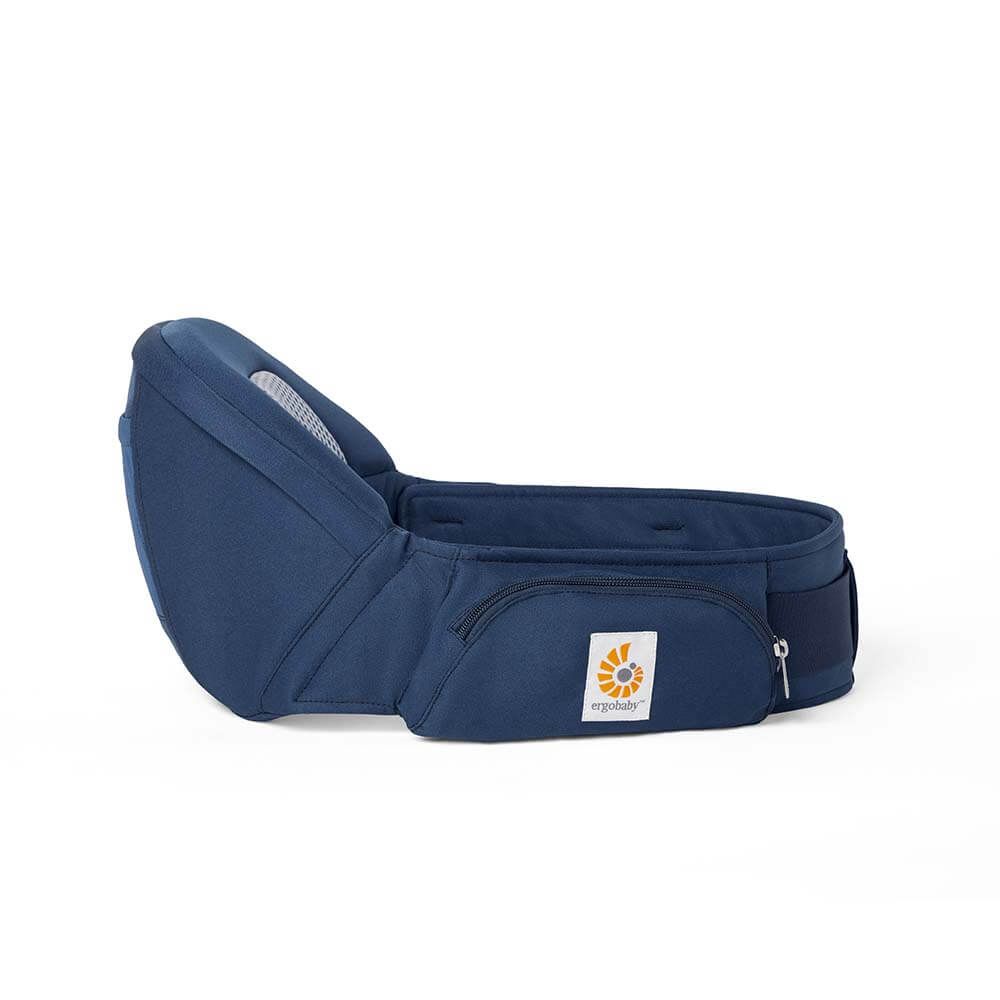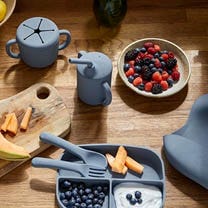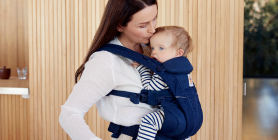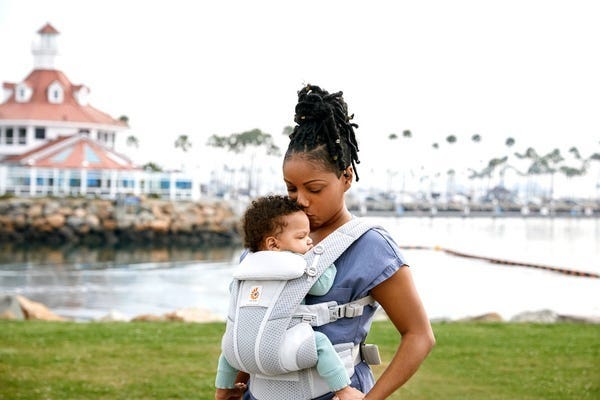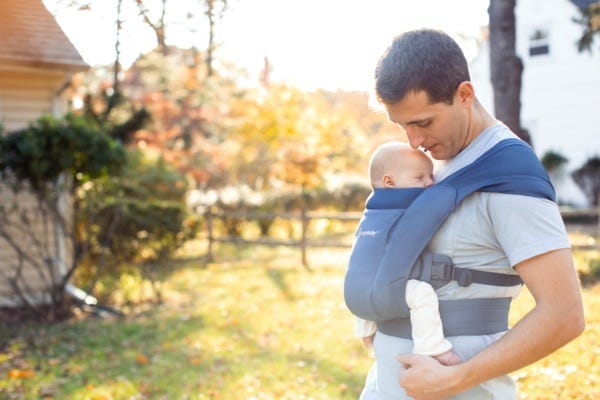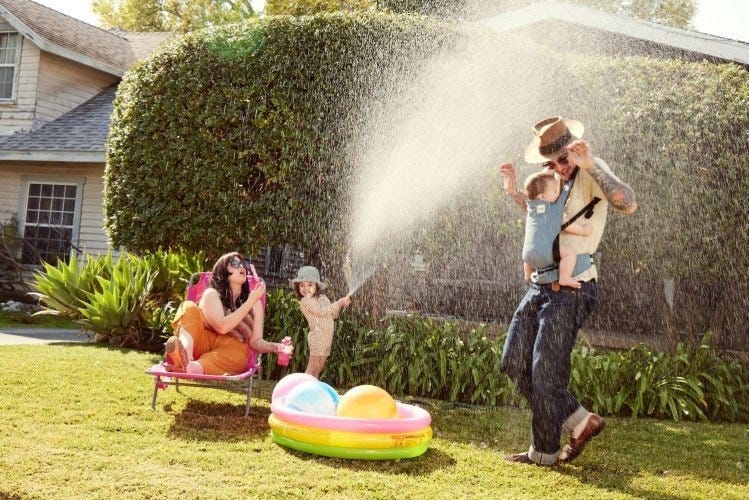Hip dysplasia, also referred to as developmental dysplasia of the hip (DDH), is widely believed to be developmental. I am not an expert on this subject, but thankfully there are those who are experts, and that is where I turned when I wanted to know more. The International Hip Dysplasia Institute (IHDI), which started in Orlando, Florida is on a mission. Their board of doctors, researchers and supporters are committed to providing the best information and care for, “children and adults affected by neonatal hip instability and developmental dislocation of the hip.”[1] They are an international non-profit organization started to educate parents and physicians about hip dysplasia. The exact cause(s) are not known; however, it is known to develop around the time of birth, after birth, or even during childhood. It is believed that infants are prone to hip dysplasia for a variety of reasons: 1. Hip dysplasia is approximately 30 times more likely when there is a family history. 2. The baby's womb position can increase pressure on the hips. Babies in the breech position are more likely to have hip instability than babies in a normal womb position. 3. The bones of an infant’s hip joint are much softer than an adult hip joint. 4. Infant positioning during the first year of life.[2] If hip dysplasia is not seen at birth, it is important for parents to recognize the signs over the next year. You, as a parent, are often the first ones to notice something out of the ordinary. Remember you are your baby’s advocate. Signs to look out for are: Asymmetry Looking at the buttock crease will often show you if there is asymmetry. Your doctor will follow this up with an ultra sound or x-ray. (I’d forgo the x-ray if possible and request the ultra sound) Hip Clicks Limited Range of Motion This might be noticed while changing diapers. Often babies with hip dysplasia can’t fully spread their hips. Pain Not normally felt in infants, pain can be a symptom of hip dysplasia in adolescents and young adults. Swayback This is an extreme curvature of the lower back with or without a limp when walking. At birth, hip dysplasia is diagnosed through a variety of tests. The doctors check the hips, and if there are any factors that increase the possibility of risk, such as:
- Baby is a twin or multiple, or was in a breech position at birth.
- Family history of hip dysplasia.
- Concern about the results of the physical exam.
The doctor will recommend an ultra sound and follow up exams.
The treatments for DDH vary. Most babies treated under six months, are braced in a way that keeps the hip joints open. The two most common practices are:
The Pavlik Harness, a harness that is specially designed to gently position the baby’s hips in a well-aligned and secure position, and hip abduction braces, which are smaller and used for children who are beginning to move around. Even if a baby is not diagnosed at birth, it is still important to consider the best way to prevent its occurrence. Certain ways of swaddling a baby can actually cause hip dysplasia. A baby whose legs are held straight, as in the papoose boards used by some cultures, and tight swaddling for extended periods, have high rates of hip dysplasia. Cozy is one thing, but babies need to be made cozy in an open legged position to ensure the best protection. Notice how a baby or even adults legs splay out naturally when they are relaxed, or asleep. This position is best. Tight swaddling of infants can cause their loose hips to move upward and away from the socket. There are a variety of methods for swaddling a baby, but the only safe way is to make sure that there is room for the hips to move. Keeping the blanket loose enough at the bottom is the best way to ensure that freedom. Carry Baby in an Open Legged Position When carrying the baby in an upright position, the baby's hips should always be straddled around the wearer's body. The legs should be pulled up at a 90-degree angle. This is only possible if the carrier crotch piece is wide enough so that it will reach the hollow of the baby’s knees. The legs are pulled up to support the baby's body and balance. When the baby's knees are pulled up to a 90-degree angle, the baby's legs are spread between a 90 and 120-degree angle around the wearer's body. This agrees with the baby's anatomical make up and supports proper hip development. According to research by Dr. Jeffrey Hull, the best hip and hip joint position is with the knees up and away from the centerline, also called the frog leg position.[3] All of this information is readily available to anyone seeking to know more. What I wanted to know was what it was like to experience having a baby with this issue. In our neighborhood there is a woman named Maria, whose daughter was born with two clubbed feet. Although it is different from hip dysplasia, there are many day-to-day issues that parents would have to deal with that are similar. She agreed to allow me to interview her; talk about some of the commonalities of having an infant diagnosed with a medical issue, and how that affected her experience with her baby, herself and the community at large. Maria is a happy, smiling young mom. She had already had a daughter and welcomed the thought of a new baby coming to the family. When Skyla was still in the womb, doctors diagnosed her with clubfoot, or congenital talipes equinovarus (CTEV). This was hard to hear, but gave the family time to adjust before she was born. At 4 days old, Skyla was put into casts on both legs, which had to be changed every week. The countless hospital visits; the surgery, and the leg braces were all a part of Maria’s life with her new baby. She and the family were optimistic and reassured at every turn that they would be successful in straightening little Skyla’s feet. This is similar to what parents go through when their child is diagnosed with Hip dysplasia. Learning different ways to bathe, carry and entertain a baby in a cast or brace is something challenging to get used to. Over the next few years, getting used to it is what they did. In fact, not only does Skyla run around even with her casts, she can also be seen riding her bike like an expert at only four and a half years old. When I asked Maria what were some of the difficulties she experienced with having a baby with medical issues, she was very honest and said, “It was a bit hard at first, as there is no real support group here for this. I found it helpful to go online and research and hear from other parents.” She also shared that, “Skyla is my hero. She never let this hold her back. She crawled, and ran and even though I was tired, frustrated and sometimes sad about it, I knew that this was fixable and we were on the road to recovery.” Maria told me that bathing was especially difficult, as she couldn’t ever fully submerge Skyla. “But, the hardest thing might have been all of the strangers who asked about her,” she said. “People would often look at her with pity, and ask what happened?” Granted it did look a bit like she had two broken legs, but Maria, tired from lack of sleep, and feeling delicate, found it a bit overwhelming. When I asked her if she had any advice, for curious, well-meaning people who approach others in search of information, she said, “Maybe just ask what her name is!” Talking to Maria made me smile. It’s good though to be reminded, that all mother’s, of all babies, want to see their babies as normal, adorable little people. We might want to entertain this when reaching out to people we meet. People are always more than what they appear, and even babies in braces, casts, and wheelchairs have names. The International Hip Dysplasia Institute (IHDI) is a collaborative, international, not-for-profit effort to improve the health and quality of life of those affected by hip dysplasia.
References: [1] The International Hip Dysplasia Institute (IHDI) 83 W. Columbia St. Orlando, Florida 32806 Fax: (321) 843-5298 http://www.hipdysplasia.org/default.aspx [2] Infant and Child Hip Dysplasia, “Causes.” http://www.hipdysplasia.org/Developmental-Dysplasia-Of-The-Hip/Causes/default.aspx Links: Another book by author Betsy Miller, The Parents’ Guide to Clubfoot The Parents Guide to Clubfoot covers all aspects of clubfoot in babies and children from diagnosis through treatment, emphasizing the Ponseti method, which minimizes surgery. Written in everyday language, this book explains clubfoot, discusses treatment for mild to severe cases, and includes perspectives from Ponseti-trained clubfoot doctors and parents of children with clubfoot.
Emotional Benefits of Getting Outside
Spending time in nature with your baby can strengthen the bond between you. The simple act of holding your baby close, feeling their warmth, and sharing new experiences together can create strong emotional connections. It’s also a wonderful way to reduce stress and improve your mood. When my littles were extra fussy, I’d take a walk around the neighborhood. Even though I don't live in an area with trails and surrounded by nature, simply behind outside changed everything. A little vitamin D does wonders!
Cognitive Development
Nature is a sensory wonderland for babies. The different sights, sounds, and smells can stimulate your baby’s senses and promote cognitive development. Watching leaves rustle, hearing birds chirp, and feeling the texture of a tree bark can all contribute to their learning and development.
All About Baby Carriers for Nature Adventures
Choosing the Right Baby Carrier
When it comes to selecting the best baby carrier for summer adventures, there are several options to consider.
Types of Baby Carriers:
- Wraps: Perfect for newborns, providing a snug and secure fit.
- Slings: Ideal for quick and easy use, offering good ventilation.
- Soft Structured Carriers: Versatile and comfortable for both parent and baby, suitable for longer trips.
Factors to Consider:
- Baby’s Age and Weight: Ensure the carrier is appropriate for your baby’s size and weight. For example, Ergobaby’s Embrace Newborn Carrier is perfect for the fourth trimester where baby is small and you’re looking for an easy way to stay close. As they grow, you’ll want to upgrade to an all-position carrier that’s meant for growing babies.
- Parent’s Comfort and Ergonomics: Look for carriers with padded shoulder straps and lumbar support if you’re planning on longer outings.
- Ease of Use: Choose a carrier that is easy to put on and take off.
- Climate and Breathability: Opt for carriers made of breathable fabrics to keep you and your baby cool in hot weather.
Safety Tips:
- Proper Positioning: Ensure your baby is seated correctly, with their legs in an "M" position and their head should be close enough to kiss.
- Checking for Wear and Tear: Regularly inspect your carrier for any signs of damage.
- Ensuring Adequate Support: Make sure the carrier provides proper support for your baby’s head and neck.
Exploring Nature with a Baby Carrier
Ideal Spots for a Nature Walk with Baby
- Parks and Gardens: Great for leisurely walks and picnics.
- Nature Trails and Forests: Perfect for more adventurous outings.
- Beaches and Lakesides: Wonderful for enjoying the water and sand, with the right carrier.
Activity Ideas
- Hiking: Enjoy a scenic hike with a hiking baby carrier that offers support and storage.
- Bird Watching: Use your carrier to keep your baby close while you explore and observe wildlife.
- Picnics: A carrier can free up your hands, making it easier to carry picnic supplies.
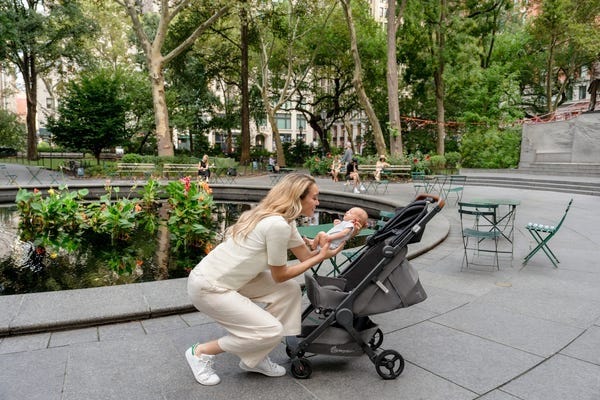

Advantages of Using Strollers for Nature Adventures
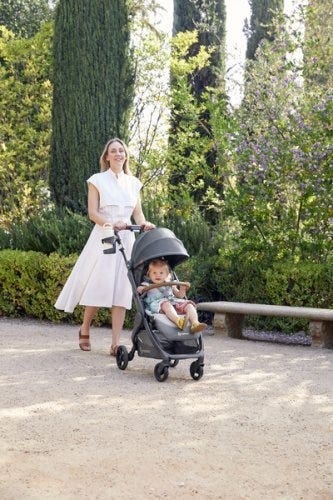

While baby carriers are fantastic for mobility and closeness, depending on the adventure of choice you might want to be a stroller along too.
There are a LOT of baby stroller options on the market. So we understand how confusing it can be to choose the one that’s right for your family. Not only are there a variety of brands, but a variety of strollers that serve different purposes.
There are a few types of strollers on the market:
- Full-sized stroller: This is typically the stroller parents thing of buying for all its versatility.
- Lightweight or umbrella stroller:These compact strollers are perfect for on-the-go adventures.
- Jogging stroller: Designed for parents who want to combine fitness with outdoor adventures.
- Double stroller: Designed for parents with multiple kids, especially twins.
- Car seat carrier: These strollers connect to a specific car seat. We don't typically recommend these as they can be unsafe for baby and uncomfortable for parents who are pushing.
Learn more about the types of strollers and which one would be best for you.
Benefits of Bringing a Stroller
- Storage Space for Gear: Ample room for carrying all your essentials like a diaper bag, beach toys and more.
- Shade and Weather Protection: Built-in canopies to shield your baby from the sun when they are lounging.
- Options: If you have more than one kid, you can stroll with one and carry the other. Or, if you’re getting warm or your little one is getting fussy, you can switch up their position from stroller to carrier or vice versa.
Safety Tips for Strollers
- Ensure your stroller is in good working condition. Make sure buckles are still buckling and that there are no rips or holes that could compromise your baby’s safety.
- Use sunshades or bug nets to protect your little one’s skin.
- Securing the baby properly: always buckle up your baby for safety even if you think they are old enough to go without the buckle.
Combining Baby Carriers and Strollers
For the ultimate flexibility, consider using both a baby carrier and a stroller on your outings.
Combining both options allows you to adapt to different situations. Use the carrier for more rugged trails and switch to the stroller for smoother paths or when your baby needs a nap.
Transition Tips
- Smooth Transitions: Plan stops where you can easily switch from carrier to stroller.
- Pack Light: Only bring essentials to make transitions easier.
Tips for a Successful Adventure
Planning Ahead
- Route Planning: Choose baby-friendly trails and parks. Check local mom groups or outdoor groups and get recommendations for the best outings for kids.
- Check Weather Conditions: Avoid extreme heat or unpredictable weather. Even with our most breathable carriers, when it’s hot, it’s hot. And having two bodies against each other in the heat will be naturally hot and sticky already.
- Packing Checklist: Include diapers, snacks, water, sunscreen, and a first-aid kit. These all-position carriers have storage pockets where you can fit some of the items easily!
- Stay Hydrated and Nourished: Pack healthy snacks to keep energy levels up and bring plenty of water for both you and baby.
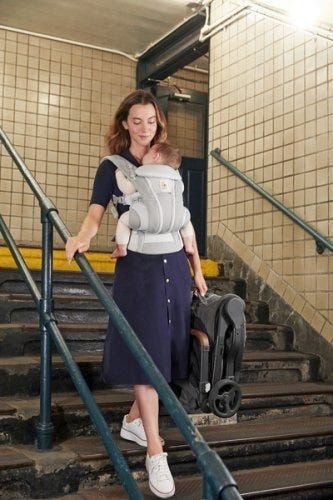

Summer adventures with your baby are a wonderful way to create lasting memories and enjoy the beauty of nature together. From baby carriers to strollers, Ergobaby products are designed to provide comfort and ease for both you and your little one. So, gear up, get outside, and explore the world with your baby by your side.
Ready to embark on your own summer adventures? Check out Ergobaby’s range of baby carriers and strollers to find the perfect match for your family’s needs. Visit our website today and start planning your next outdoor excursion!





